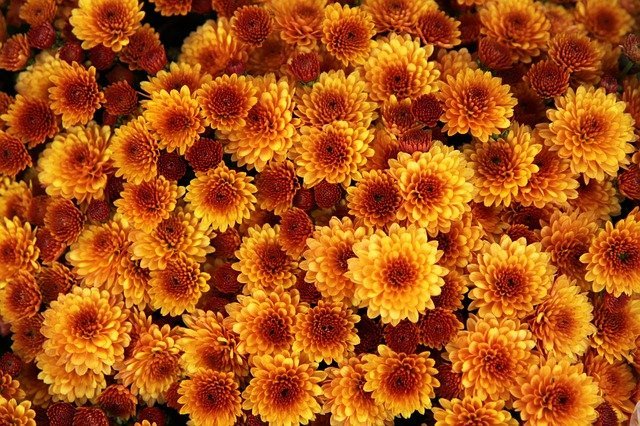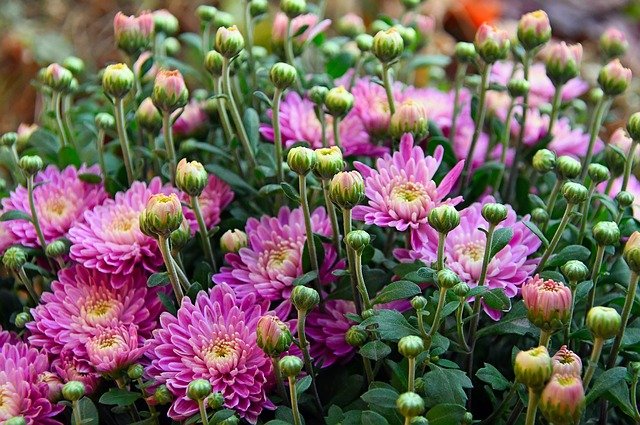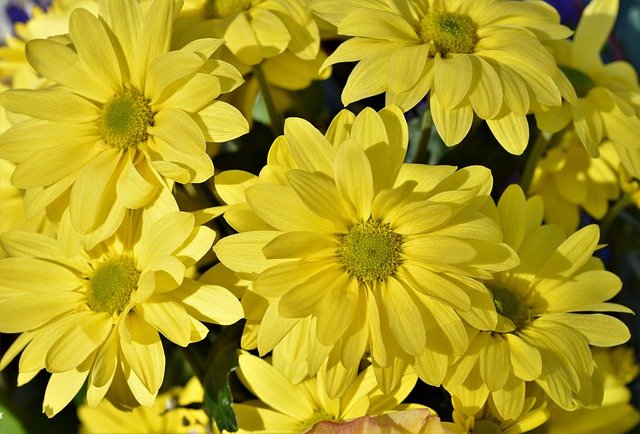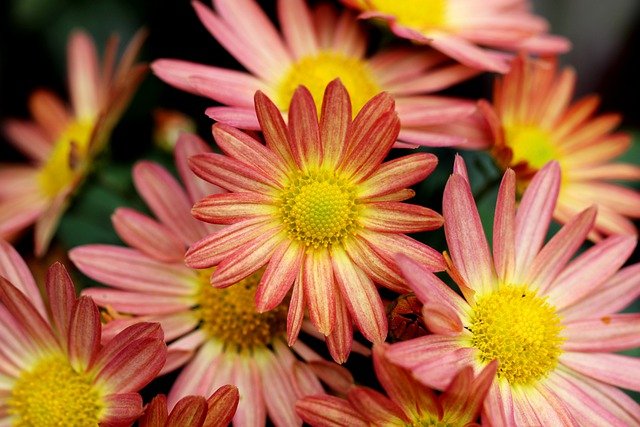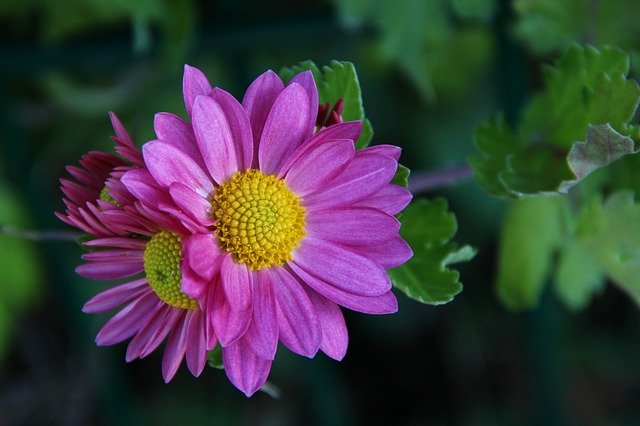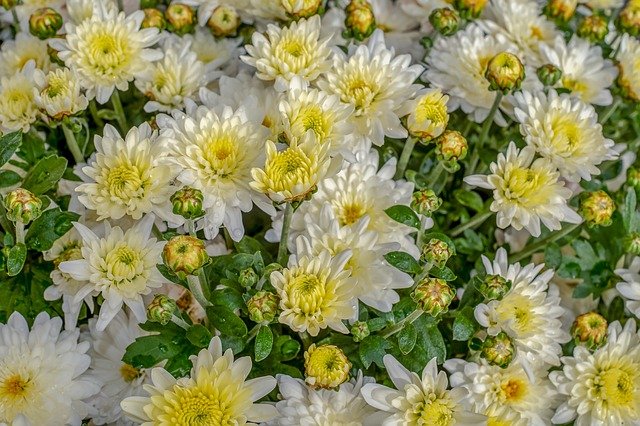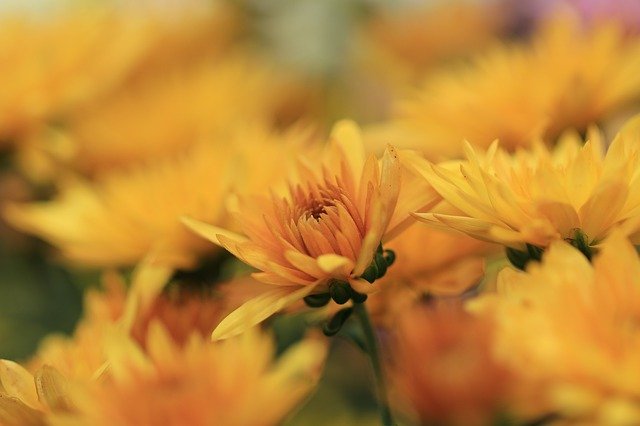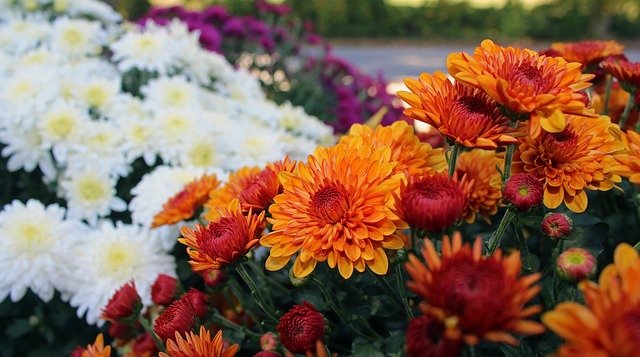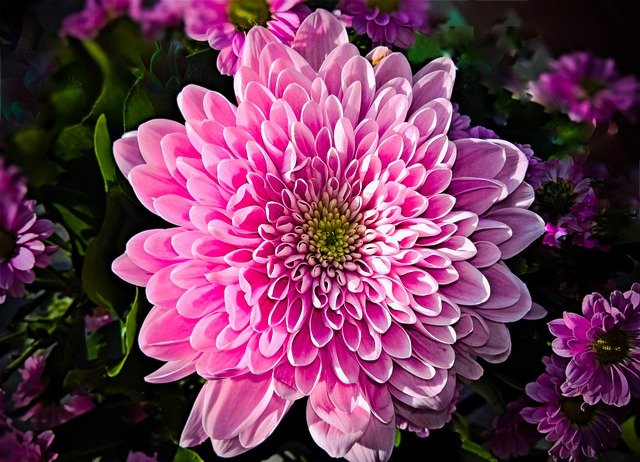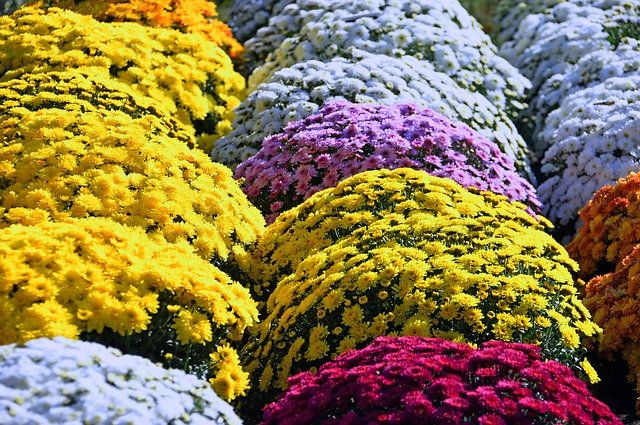Long-flowering, colorful Mums are ideal for adding spots of bright color to the autumn garden. There are 30 different species in the Chrysanthemum genus, broadly categorized into “florist” mums and “hardy” mums. They are further broken down into different types of blooms: cactus, cushion, anemone form, incurved, intermediate, Korean, pom-pom, spider, reflex, single, others.
All Chrysanthemums demand full sun, rich soil, and regular water. Container specimens must have good drainage to prevent root rot. Plants have a shallow root system, and may need daily irrigation during the hottest part of the summer. Flowers come in a wide range of colors: yellow, orange, burgundy, purple, bi-colors. Good air circulation will prevent leaf issues. Plants are perennial in zones 5-9.
In garden beds, pinch plants back often in spring to keep them compact and get more blooms. Stop pinching in late June so they have time to develop bloom buds. Bud formation is triggered by the shorter days of late summer and early fall. Divide plants in spring, every two or three years, discarding the woody interior section and replanting the vigorous outer portions. Plants can be propagated from cuttings.
Potted (“florist”) Chrysanthemums are found at big box stores and grocery stores in the fall. These have been greenhouse bred and chemically treated to keep them short and light manipulated to make them bloom on cue. They are typically not as cold-hardy as the selections grown for borders. Gardeners in warmer zones can keep them in a freeze-free area through winter, then plant them out into the garden in spring. Some will survive and return the following year, but they won’t ever be compact like their original supermarket form. Plants may bloom much earlier (May or June) and be much taller (24-30”).
Chrysanthemums are toxic to humans, horses, dogs, and cats. Their pungent foliage makes them less likely to be browsed by deer or rabbits.

